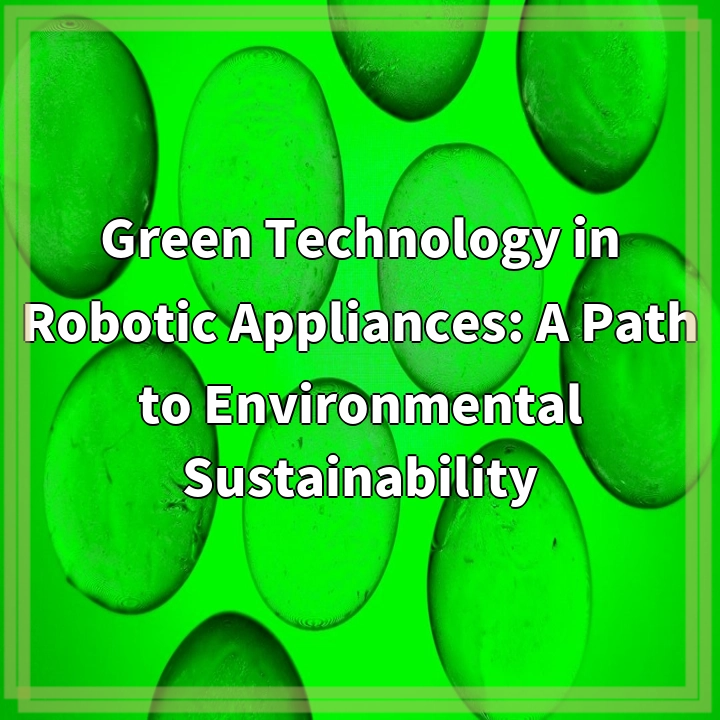
What is Green Technology in Robotic Appliances?
Green Technology in Robotic Appliances refers to the use of sustainable and eco-friendly practices in the design, production, and operation of robotic devices. It involves implementing energy-efficient technologies, reducing carbon emissions, minimizing waste, and utilizing renewable resources.
Real-World Problems Associated with Green Technology in Robotic Appliances
1. Limited Adoption and Accessibility
One significant challenge in implementing green technology in robotic appliances is the limited adoption and accessibility of these products. Green alternatives may have higher upfront costs, making it difficult for some consumers to afford them. Moreover, availability and awareness of environmentally-friendly options are often limited, preventing widespread adoption.
2. Resource Constraints
The production of green technology in robotic appliances requires specific resources, such as rare earth materials and sustainable energy sources. However, the extraction and processing of these resources can have their own environmental implications, including habitat destruction, water pollution, and carbon emissions. Balancing the need for these resources while minimizing the negative impact on the environment is a complex challenge.
3. Electronic Waste Management
As technology advances, the rate of electronic waste generation increases. The disposal and management of outdated or malfunctioning green robotic appliances pose environmental risks if not handled properly. Recycling programs and responsible e-waste disposal methods need to be in place to prevent the accumulation of hazardous materials in landfills and promote the recycling of valuable components.
4. Technological Limitations
While green technology in robotic appliances shows promise, there are still technological limitations that need to be overcome. Energy storage, for example, remains a significant challenge in maximizing the efficiency of these devices. Developing more efficient batteries and exploring alternative energy sources, such as solar or kinetic energy, can help address this issue.
5. Consumer Education and Behavior
The success of green technology in robotic appliances also depends on consumer education and behavior. Many people may still be unaware of the benefits of sustainable alternatives or may not prioritize environmental considerations when making purchase decisions. Promoting awareness and educating consumers about the positive environmental impacts of green technology can drive demand and encourage change.

Solutions for Green Technology in Robotic Appliances
1. Promote Affordability and Accessibility
Efforts should be made to make green technology in robotic appliances more affordable and accessible to a wider range of consumers. Government incentives, subsidies, and tax breaks can help reduce the upfront costs of these devices. Additionally, manufacturers should strive to increase production and distribution of environmentally-friendly options in the market.
2. Sustainable Resource Management
It is crucial to ensure responsible sourcing and management of resources used in green technology. This can be achieved through sustainable mining practices, recycling and reuse of materials, and exploring alternative resources. Collaboration between manufacturers, mining industries, and environmental organizations is essential to minimize the environmental impact associated with resource extraction.
3. Effective Electronic Waste Disposal
To address the issue of electronic waste, proper disposal and recycling programs should be established. Companies can take responsibility for collecting and recycling outdated or malfunctioning robotic appliances. Educating consumers about the importance of recycling and providing convenient options for e-waste disposal encourages responsible behavior and reduces the environmental impact.
4. Technological Advancements
Ongoing research and development efforts are necessary to overcome the technological limitations of green technology in robotic appliances. Investment in improving energy storage capacity, efficiency, and exploring novel energy solutions will pave the way for more sustainable devices. Collaboration between scientists, engineers, and manufacturers can accelerate technological advancements in this field.
5. Consumer Education and Awareness
Raising awareness about the benefits and importance of green technology is key to driving consumer demand. Educating the public about the environmental impact of traditional robotic appliances and the potential benefits of sustainable alternatives can help shift consumer behavior. Information campaigns, product labeling, and consumer advocacy groups can play a crucial role in promoting responsible and sustainable purchasing decisions.















